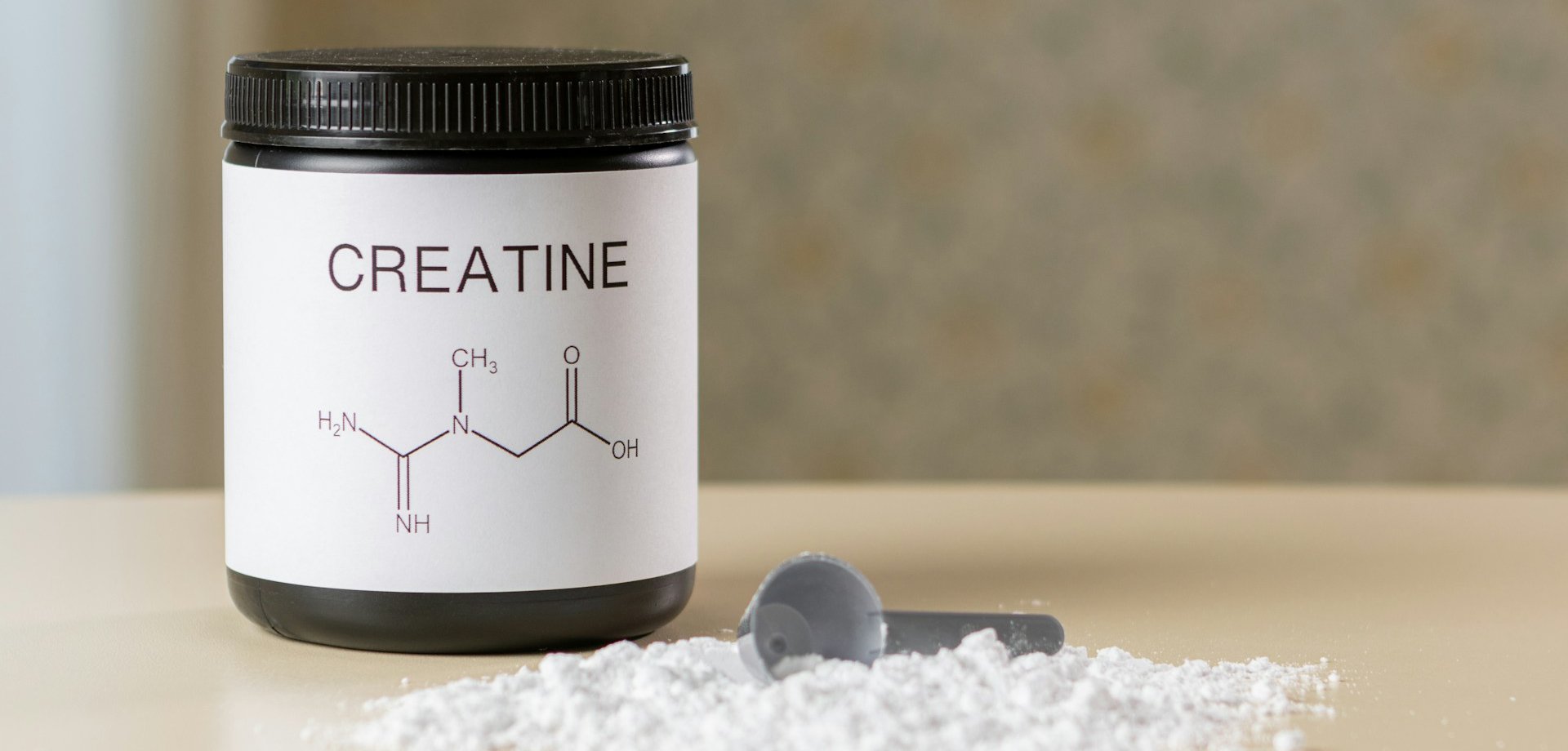Even protein distribution: the secret to more efficient muscle development
Author:
Julio Valero
Published on:
1/14/2025

Protein ingestion evenly distributed across three meals increases resistance exercise-induced muscle hypertrophy in healthy young men.
Does the total amount of protein per day or the distribution of protein in meals have a greater influence on muscle growth?
Overview
Total muscle mass was the primary endpoint of this study, which compared the effects of two breakfast types in young men undergoing a strength training program. A total of 26 participants were randomly assigned to consume a high-protein or low-protein breakfast for 12 weeks. Muscle mass was measured at baseline and at the end of the study using DEXA.
The research showed that breakfast composition can directly influence body composition and physical performance. Those individuals who prioritized protein in their first meal of the day experienced more significant muscle growth and strength improvements, although the latter were not statistically conclusive. These results underscore the relevance of a balanced, protein-rich breakfast for those looking to optimize their muscle mass and performance.
The distribution of protein throughout the day can be a factor to consider, but it is only one piece of the puzzle. To maximize the benefits, it is essential to combine this strategy with a calorie-balanced diet, well-designed resistance training, and adequate rest. While an even distribution may provide some additional benefits, it is not a substitute for these other essential elements for muscle development.
What's the problem?
The combination of resistance training and proper nutrition, especially with regard to protein consumption, is a fundamental pillar for building and strengthening muscles. Although the importance of protein is widely recognized, the question of the ideal amount and distribution of protein intake throughout the day remains a matter of debate.
The rationale behind this recommendation lies in the stimulation of muscle protein synthesis (MPS). This biological process is essential for muscle repair and growth after exercise. Numerous studies have shown that a daily protein intake of at least 1.6 grams per kilogram of body weight is necessary to maximize MPS. However, more recent studies suggest that consuming more than 2.2 grams per kilogram does not provide significant additional benefits.
But what about the distribution of protein throughout the day? Scientific studies have revealed that consuming around 20-30 grams of protein per meal is sufficient to optimally stimulate MPS. This amount equates to approximately 0.25-0.3 grams per kilogram of body weight per meal. Although this is an average, individual needs may vary slightly, especially in older or younger people, due to factors such as age, sex and body composition.
It is important to note that these recommendations are generalizations based on the available scientific evidence. Individual needs may vary, and factors such as training intensity, genetics, and health status may also influence the optimal amount of protein. Therefore, it is recommended to consult a health professional or sports nutritionist for a personalized nutrition plan.

Protein distribution throughout the day is key to optimizing muscle mass. Studies in rats and humans show that an even distribution of protein at each meal stimulates muscle protein synthesis (MPS) and promotes better body composition. While more research is needed, current evidence suggests that compensating for a low protein intake at one meal with an excess at another is not the most effective strategy.
Purpose
The primary objective of this research was to evaluate the impact of consuming a higher amount of protein at breakfast on muscle growth, compared to a more even distribution throughout the day, in a 12-week resistance training program.
Hypothesis
Although no explicit hypothesis was formulated, the introduction suggests an expectation that higher protein consumption at breakfast might be associated with superior benefits compared to distributing it across other meals of the day.

What Did They Test and How?
Participants
The study initially included 33 healthy young men (18-26 years) with no recent history of resistance training. However, 5 participants from the high protein group and 2 from the low protein group dropped out of the study. Reasons for dropping out included difficulties adhering to the diet provided (n=4) and medical procedures unrelated to the study (n=3). The final analysis was based on data from 26 participants (HBR n=12, LBR n=14)..
Study procedures
Participants were randomized into two experimental groups: a high-protein breakfast (HBR) group and a low-protein breakfast (LBR) group. Both groups participated in a 12-week nutritional and resistance training intervention study.
The primary goal of the HBR group was to consume more than 0.24 grams of protein per kilogram of body weight at each of the three main meals (breakfast, lunch and dinner). The LBR group, on the other hand, aimed to achieve the same total daily protein intake, but distributing it differently: a reduced protein intake at breakfast and a higher amount at lunch and dinner.
To ensure meal standardization and facilitate protein intake monitoring, all participants were provided with an identical breakfast throughout the 12 weeks of the study. However, the main difference between the groups was the timing of the consumption of a whey protein supplement: the HBR group ingested it with breakfast, while the LBR group consumed it with dinner.
In addition to standardized breakfasts and protein supplements, 3-day dietary records were collected at baseline and at the end of the study to verify compliance with nutritional goals.
Regarding resistance training, a program of three weekly sessions was implemented over the 12 weeks, equivalent to a total of 36 sessions. Participants could choose between attending morning or afternoon sessions under the supervision of trained personnel.
Measures
Three-day dietary records were collected at baseline and 12 weeks into the intervention. Participants recorded all foods and drinks consumed during two weekdays and one weekend, including photos of the food. A dietitian verified and supplemented the records through personal interviews.
Maximal strength: Maximal strength (1-RM) was assessed at baseline and at the end of the study in lower body exercises (leg flexion and extension) and upper body exercises (arm curls, back row, and chest press) on selectorized machines.
Body composition: Body composition was measured by DXA, assessing fat mass and muscle mass (BMM), including appendicular muscle mass (AppLTM) as an indicator of arm and leg muscle mass.
What Did They Find?
Nutrient Intakes
The results of the study revealed that although total calorie and protein intake was similar between the groups, the distribution of protein throughout the day showed significant differences. The HBR group, with a higher protein intake at breakfast (0.33 g/kg vs. 0.12 g/kg), reduced its intake at dinner (0.48 g/kg vs. 0.83 g/kg) compared to the LBR group. Both groups significantly increased their protein intake at the assigned meal, indicating a successful adjustment of dietary habits.
Table 1 Daily energy and nutrient intake at baseline and week 12 in healthy young men with high or low relative protein intakes at breakfast, based on self-reported 3-day food records
| LBR (n=14) | |||
Baseline | Week 12 | Baseline | Week 12 | |
Total | ||||
Energy, kcal | 2599 ± 132 | 2456 ± 147 | 2453 ± 106 | 2543 ± 114 |
Protein, g | 80.9 ± 4.63 | 89.4 ± 5.51 | 83.1 ± 4.91 | 97.1 ± 3.46 |
Protein, g/kg BW | 1.23 ± 0.08 | 1.30 ± 0.07 | 1.27 ± 0.07 | 1.45 ± 0.04 |
Fat, g | 80.9 ± 6.91 | 84.4 ± 8.22 | 74.7 ± 4.48 | 94.5 ± 5.55 |
Carbohydrates, g | 374 ± 20.2 | 323 ± 16.4 | 343 ± 16.8 | 315 ± 15.1 |
Breakfast | ||||
Energy, kcal | 508 ± 82.0 | 374 ± 2.00 | 434 ± 73.8 | 287 ± 0.89 |
Protein, g | 15.5 ± 2.30 | 22.6 ± 0.02† | 13.6 ± 2.64 | 7.68 ± 0.03*† |
Protein, g/kg BW | 0.23 ± 0.04 | 0.33 ± 0.01† | 0.21 ± 0.04 | 0.12 ± 0.00*† |
Fat, g | 16.2 ± 3.29 | 13.5 ± 0.37 | 14.1 ± 2.72 | 11.6 ± 0.16 |
Carbohydrate, g | 74.1 ± 13.0 | 42.5 ± 0.37 | 62.2 ± 10.5 | 40.4 ± 0.15 |
Lunch | ||||
Energy, kcal | 730 ± 57.8 | 921 ± 53.2 | 796 ± 43.2 | 943 ± 56.2 |
Protein, g | 21.7 ± 2.54 | 31.8 ± 2.68 | 26.9 ± 2.18 | 30.0 ± 1.71 |
Protein, g/kg BW | 0.33 ± 0.04 | 0.46 ± 0.03 | 0.41 ± 0.03 | 0.45 ± 0.03 |
Fat, g | 21.2 ± 2.42 | 31.1 ± 3.42 | 20.0 ± 2.42 | 34.4 ± 2.95 |
Carbohydrate, g | 110 ± 8.70 | 122 ± 7.56 | 123 ± 6.33 | 124 ± 7.61 |
Dinner | ||||
Energy, kcal | 1144 ± 72.5 | 1038 ± 98.4 | 1121 ± 75.5 | 1147 ± 82.2 |
Protein, g | 39.7 ± 3.59 | 32.4 ± 3.06 | 40.8 ± 3.70 | 55.4 ± 3.17*† |
Protein, g/kg BW | 0.60 ± 0.06 | 0.48 ± 0.05 | 0.62 ± 0.05 | 0.83 ± 0.04*† |
Fat, g | 36.7 ± 5.50 | 36.8 ± 5.72 | 36.5 ± 4.27 | 43.1 ± 5.21 |
Carbohydrate, g | 155 ± 6.78 | 135 ± 11.9 | 143 ± 9.69 | 126 ± 8.97 |
RT Program and Strength Assessment
Body composition
A significant increase in body weight, BMI and body fat percentage was observed in both groups. Analysis of total exercise duration showed a similar pattern between groups throughout the study (Figure 2). However, the DAP group had a moderate effect size (d=0.795) in favor of a greater increase in exercise duration, although this difference did not reach statistical significance (p=0.056).
What do the findings mean?
The results of this study, although not revolutionary, provide novel data on protein distribution. It highlights that a protein intake of less than 0.24 g/kg per meal may limit the increase in strength and muscle mass. Although the results on the increase in total muscle mass were not statistically significant (p=0.056), they showed a clear trend (d=0.795) and support the recommendation of a minimum intake of 0.25 g/kg per meal. However, the lack of details on the DXA conditions limits the interpretation of these results.
One of the most limiting aspects of this study is the notable lack of protein in the diet of both participating groups. With an average daily intake of less than 100 grams, they are significantly below the recommended minimum threshold of 1.6 grams of protein per kilogram of body weight per day, necessary to optimize muscle protein synthesis (MPS).
This protein deficiency raises questions about the validity of the conclusions obtained. It is plausible that if both groups had consumed an adequate amount of protein, the differences in the results would have been less pronounced, since MPS would have been stimulated more effectively in both cases. However, it is important to consider that even if the minimum daily threshold is exceeded, the distribution of protein throughout the day also influences MPS.

While the study presents a solid design overall, the lack of standardization in training schedules represents a limitation. Variability in attendance at morning sessions between the HBR and LBR groups could have influenced the results, especially considering the relationship between the timing of protein intake and performance. Although the evidence on the optimal timing of protein intake is mixed, the lack of control over this factor makes interpretation of the findings difficult.
The results suggest that variability in training times was not a determining factor in the differences observed between the groups. Instead, the protein dose per meal appears to be the main contributor to the changes in strength and lean mass.
How can these findings be applied?
As we've seen, protein is key to muscle growth. But it's not just the total amount that matters, but also how you distribute it throughout the day. Ideally, you should have several meals with a similar amount of protein. This ensures that your muscles always have the amino acids they need to repair and grow. A good starting point is to divide your total daily intake (between 1.6 and 2.2 grams per kilo of weight) into 4-5 meals.
Remember, to optimize muscle growth, daily protein intake should be at least 1.6 g/kg of body weight. Athletes and older adults may require up to 2.2 g/kg or more. To maximize training adaptations, consume at least 0.4 g/kg of protein per meal, although you can increase to 0.6 g/kg if you are an athlete or older.
References
Yasuda, J., Tomita, T., Arimitsu, T., & Fujita, S. (2020). Evenly distributed protein intake over 3 meals augments resistance exercise–induced muscle hypertrophy in healthy young men. The Journal of nutrition, 150(7), 1845-1851.
Morton, R. W., Murphy, K. T., McKellar, S. R., Schoenfeld, B. J., Henselmans, M., Helms, E. Aragon, A. A., Devries, M. C., Banfield, L., Krieger, J. W., & Phillips, S. M. (2018). A systematic review, meta-analysis and meta-regression of the effect of protein supplementation on resistance training-induced gains in muscle mass and strength in healthy adults. British journal of sports medicine, 52(6), 376-384.
Areta, J. L., Burke, L. M., Ross, M. L., Camera, D. M., West, D. W., Broad, E. M., Jeacocke, N.A., Moore, D.R., Stellingwerff, T., Phillips, S.M., Hawley, J.A., & Coffey, V. G. (2013). Timing and distribution of protein ingestion during prolonged recovery from resistance exercise alters myofibrillar protein synthesis. The Journal of physiology, 591(9), 2319-2331.
Moore, D. R., Robinson, M. J., Fry, J. L., Tang, J. E., Glover, E. I., Wilkinson, S. B., Prior, T., Tarnopolsky, M. A., & Phillips, S. M. (2009). Ingested protein dose response of muscle and albumin protein synthesis after resistance exercise in young men. The American journal of clinical nutrition, 89(1), 161–168.
Witard, O. C., Jackman, S. R., Breen, L., Smith, K., Selby, A., & Tipton, K. D. (2014). Myofibrillar muscle protein synthesis rates subsequent to a meal in response to increasing doses of whey protein at rest and after resistance exercise. The American journal of clinical nutrition, 99(1), 86–95.
Moore, D. R., Churchward-Venne, T. A., Witard, O., Breen, L., Burd, N. A., Tipton, K. D., & Phillips, S. M. (2015). Protein ingestion to stimulate myofibrillar protein synthesis requires greater relative protein intakes in healthy older versus younger men. The journals of gerontology. Series A, Biological sciences and medical sciences, 70(1), 57–62.
Morton, R. W., McGlory, C., & Phillips, S. M. (2015). Nutritional interventions to augment resistance training-induced skeletal muscle hypertrophy. Frontiers in physiology, 6, 245.
Norton, L. E., Wilson, G. J., Moulton, C. J., & Layman, D. K. (2017). Meal Distribution of Dietary Protein and Leucine Influences Long-Term Muscle Mass and Body Composition in Adult Rats. The Journal of nutrition, 147(2), 195–201.
Mamerow, M. M., Mettler, J. A., English, K. L., Casperson, S. L., Arentson-Lantz, E., Sheffield-Moore, M., Layman, D. K., & Paddon-Jones, D. (2014). Dietary protein distribution positively influences 24-h muscle protein synthesis in healthy adults. The Journal of nutrition, 144(6), 876–880.
Tinsley, G. M., Moore, M. L., Graybeal, A. J., Paoli, A., Kim, Y., Gonzales, J. U., Harry, J. R., VanDusseldorp, T. A., Kennedy, D. N., & Cruz, M. R. (2019). Time-restricted feeding plus resistance training in active females: a randomized trial. The American journal of clinical nutrition, 110(3), 628–640.
Tipton, K. D., Elliott, T. A., Cree, M. G., Aarsland, A. A., Sanford, A. P., & Wolfe, R. R. (2007). Stimulation of net muscle protein synthesis by whey protein ingestion before and after exercise. American journal of physiology. Endocrinology and metabolism, 292(1), E71–E76.
Fujita, S., Dreyer, H. C., Drummond, M. J., Glynn, E. L., Volpi, E., & Rasmussen, B. B. (2009). Essential amino acid and carbohydrate ingestion before resistance exercise does not enhance postexercise muscle protein synthesis. Journal of applied physiology (Bethesda, Md. : 1985), 106(5), 1730–1739.
Burke, LM, Hawley, JA, Ross, ML, Moore, DR, Phillips, SM, Slater, GR, Stellingwerff, T., Tipton, KD, Garnham, AP y Coffey, VG (2012). Aminoacidemia previa al ejercicio y síntesis de proteína muscular después del ejercicio de resistencia. Medicina y ciencia en deportes y ejercicio, 44(10), 1968–1977.
Schoenfeld, BJ, Aragon, AA y Krieger, JW (2013). El efecto del momento de la ingesta de proteínas en la fuerza muscular y la hipertrofia: un metaanálisis. Journal of the International Society of Sports Nutrition, 10(1), 53.
Comparte en redes sociales
Recent posts

A bad night's sleep: a reason to stay up even longer?

Creatine Effectiveness: What Does Science Say About Its Benefits?

Does meal timing help you lose fat?

Is your triceps press building muscle or holding you back?

Nutrition tailored to you: based on your genetic profile.

Carbohydrates: the key to an explosive workout.